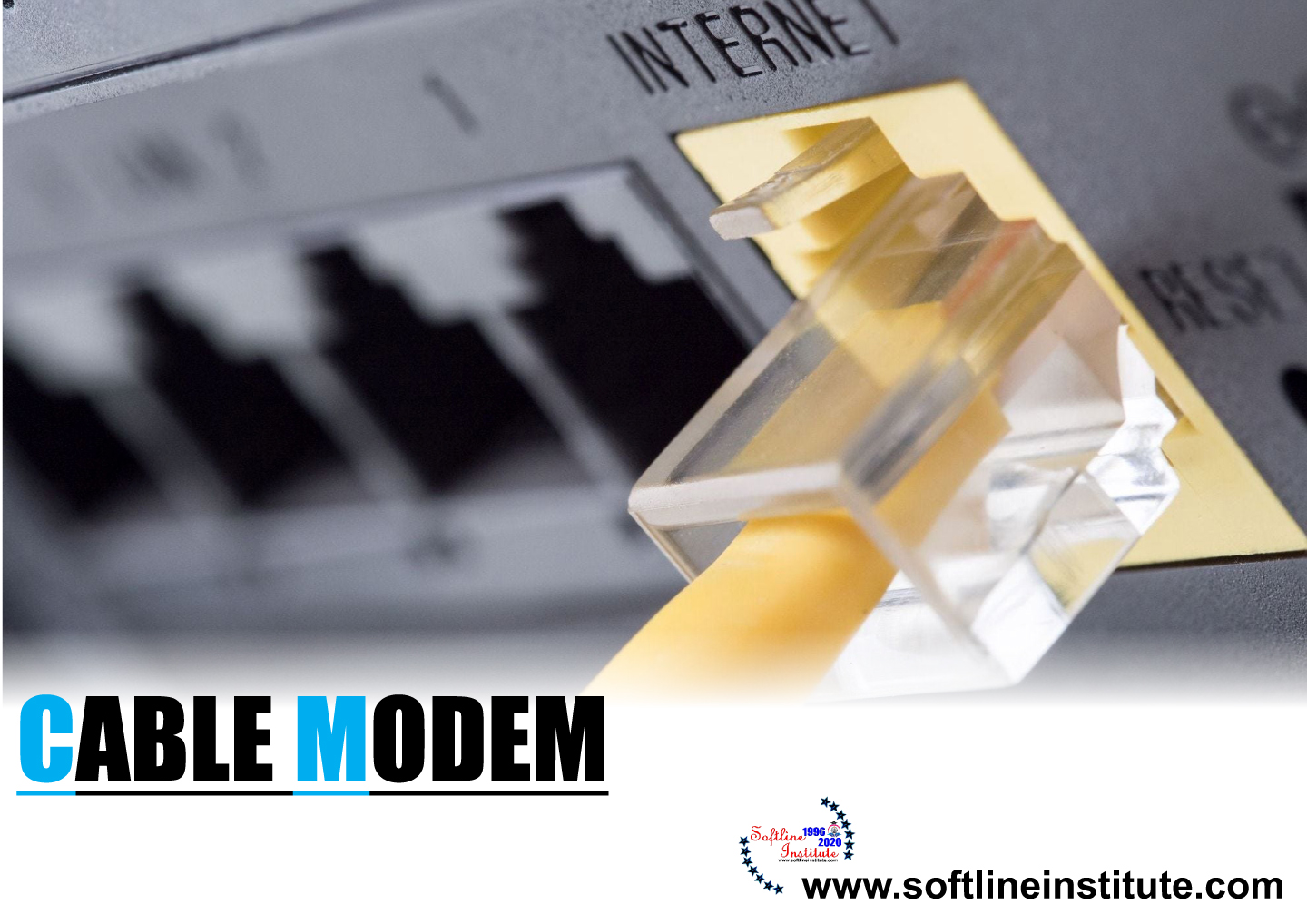ABOUT

A cable modem is a peripheral device used to connect to the Internet. It also operates over coax cable TV lines and provides high-speed Internet access. Since cable modems offer an always-on connection and fast data transfer rates, they considered broadband devices.
Dial-up modems, which were popular in the early years of Internet, offered speeds was 56 kbps over analog telephone lines. Eventually, DSL and cable modems replaced dial-up modems since they offered much faster speeds. Early cable modems provided download and 20 to 60 times faster than the fastest dial-up modems. Today, standard cable Internet access speed range from 25 to 50 Mbps. On the high end, Comcast Offers an “Xfinity Extreme” service with speeds up to 505 Mbps.
Most cable modems include a standard RJ45 port that connects to the Ethernet port on your computer or router. Since most homes now have several Internet-enabled devices, as a result cable modems are typically connected to a home router, allowing multiple devices to access the Internet. Some cable modems even include a built-in wireless router, eliminating the need for a second device.
NOTE: While “cable modem” includes the word “modem”, it does not function as a traditional modem (which is short for “modulator/demodulator”). Cable modems send and receive information digitally, so there is no need to modulate an analog signal.
History of Cable Modem (1990)
“Yassini connects personal computers to the Internet.“
Imagine a world where broadband did not exist. Without this high-speed data transfer, would the Internet still be the hub of information, pictures, movies, and business opportunities it is today? The fast connection speeds required the invention to the cable modem, and the man who did that was Iranian-born American electrical engineer Rouzbeh Yassini (b. 1958).
Yassini worked for General Electric in 1981 building television receivers. To understand how the signals flowed, he took home television sets and dismantled them to see how they functioned. This knowledge proved useful when in 1986 he joined Proteon, a data-networking company that used a network cable called “twisted pair” to carry data.
Despite being told that video and data did not mix, Yassini realized right from the beginning that he could employ the same coaxial wire that carried cable television into people’s homes to deliver other information as well. In 1990 he created a new company called LANcity Corp. He and his thirteen-strong team started to build a device that would provide an interface between a data network on one side and a cable television network on he other-the first cable modem. The initial model retailed at a staggering $15,000 and took three months to install. Just five years later, However the third-generation LANcity modem was “plug and play” and cost just $500.
The company was bought very soon after this for $59 million by Bay Networks. Yassini went on to spearhead the development, implementation and certification of DOCSIS, a standard for carrying data over cable modems.
Yassini’s local area network (LAN) cable modem connected computers to the Internet World Wide.

